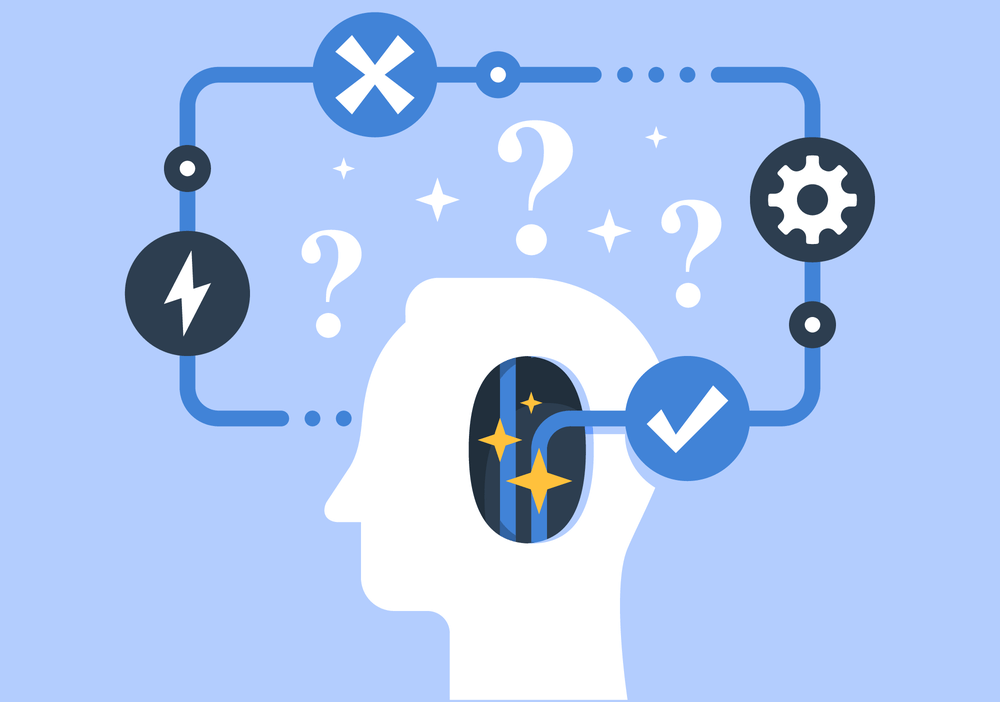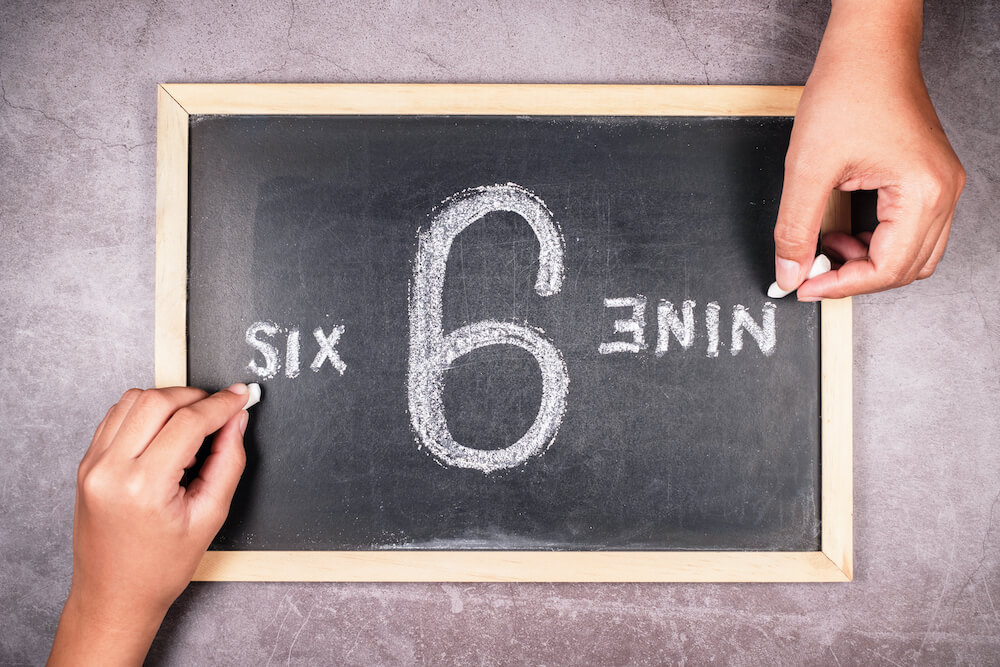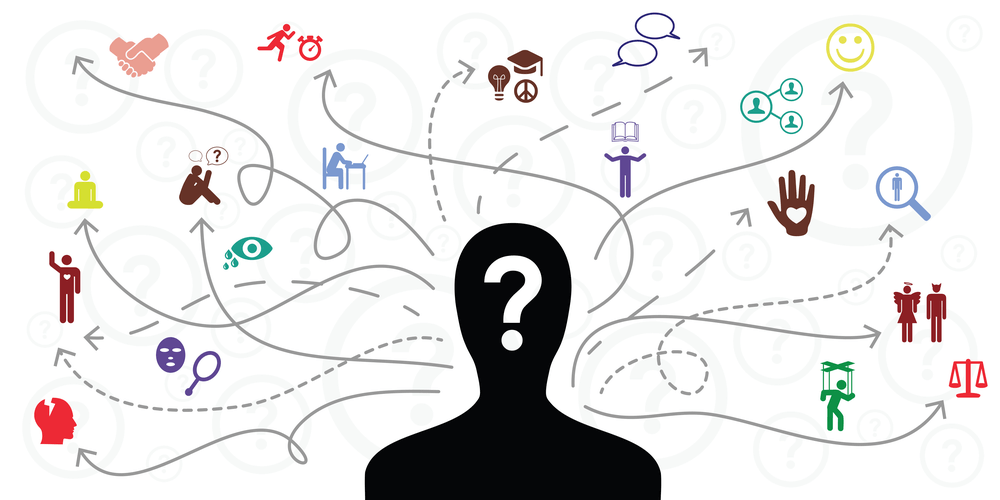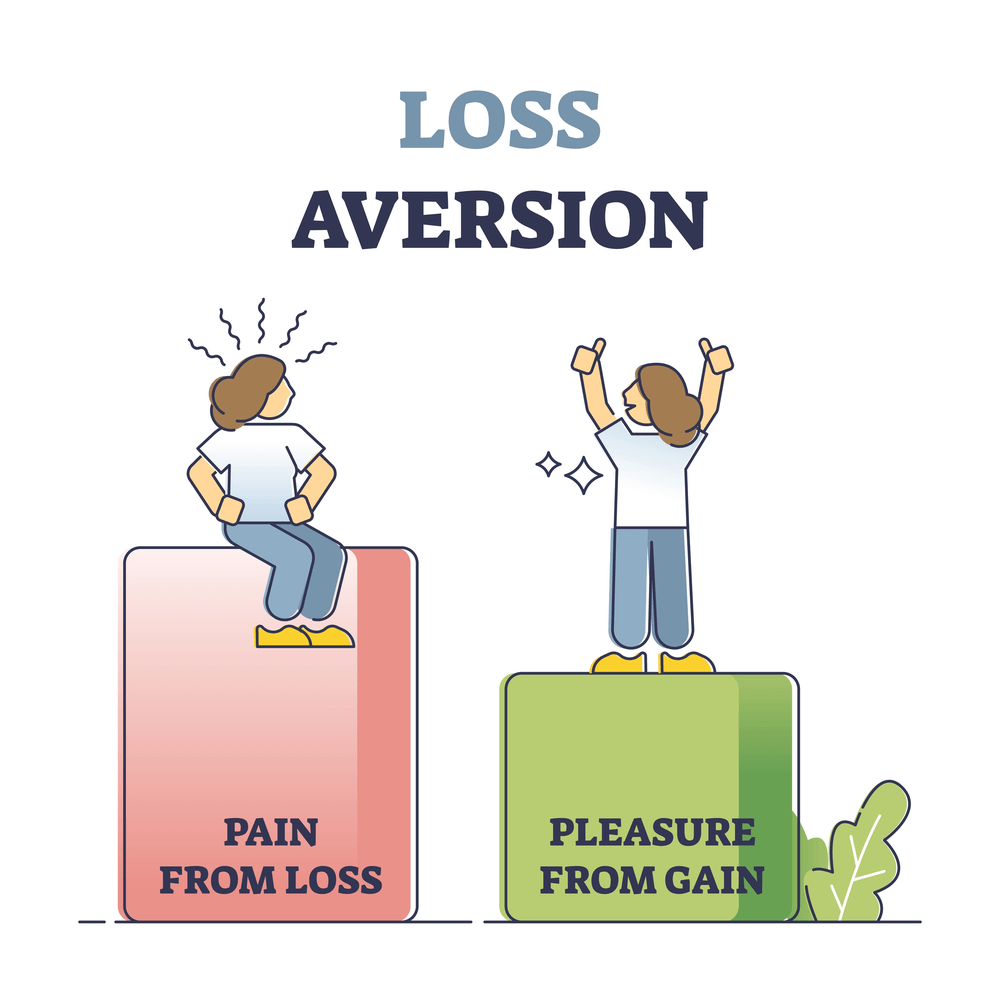How the brain can trick us
Our brain makes lots of big and small decisions. The shortcuts it uses can increase efficiency but are prone to errors. Welcome to the world of intuition and heuristics.

Intro: Thinking in concepts and prototypes
Imagine two people arguing over a number. One person says that the number is 6 while the opponent is convinced that the number is 9. Who is right?

Of course, the key is that they have different perspectives of the same symbol—they see it from different angles.
Our cognition can also do this to us: like tinted glasses, it sometimes colors reality. These glasses also can make everything look more beautiful, or uglier, or even distort the shapes of the objects.

To understand what these glasses are made of, let’s take a closer look at cognition and learn more about how biases and heuristics can affect our perception, thinking, and decision-making.
Every time we make a decision, we follow a particular strategy of which there are many. Cognitive strategies emerge from mental concepts—mental groupings of similar objects, ideas, people, and events. There are the simple ones that name actions like running, reading, or explain everyday things. They are mostly unconscious, and we don’t pay much attention to them. But there are also more complex and personal concepts that may vary depending on cultural differences, characters, and personality. They are the ones that express what is good or bad, as well as what is love, friendship, loyalty, fairness, and so on.
Mental concepts are organized into prototypes—mental images of objects and ideas. Concepts and prototypes speed up our thinking. The mind perceives something—a sound, an object, an event—and instantly knows what it is and how to treat it.
On the one hand, it is really convenient because it saves time and mental effort, but on the other, it sometimes creates unnecessary stereotypes and boxes cognition. Cognition is the term referring to the mental processes involved in acquiring knowledge and comprehension. Perception, thinking, learning, understanding language, memory, and attention are all cognitive processes.
The brain processes an enormous amount of information every second. Besides conscious thoughts, emotions and feelings, there are other things to manage—breathing, keeping a posture, maintaining the heart beating, and regulating the digestive system. To make it easier for the brain, some decisions follow simple patterns or algorithms.
People tend to pay more attention to the important decisions like which house to buy or whether to go studying abroad. We tend to make pros and cons lists or analyze the consequences of each difficult choice. Routine choices are rather trivial—where to go for lunch, which transport to use, or whether we like the person we’ve just met for the first time. These small decisions are based on our perception and can be easily influenced by factors that have little to do with willful decision-making.

Sensory marketing uses our senses to create a positive impression of a brand and stimulate people to buy more products. In the supermarkets, special lighting and aromas are used. Many experiments showed that enhancing the senses through association increases sales. For example, if the bread lies under the blue light, usually associated with cold, people will omit to buy it. Instead, they tend to choose the bread laid out under the warm light paired with the smell of the bakery and naturally-looking decorations like wooden elements or linen cloth. Look at these pictures. Which one looks tastier?


Thinking fast and slow
Sometimes the decisions we make are not really smart. To carefully plan everything, analyze the consequences and figure out all possible strategies, the brain has to accumulate much mental effort. Time, environment, emotions, previous experience, beliefs, and knowledge add to the final verdict.
The first to formulate the dual processing theory was philosopher and psychologist William James who wrote that humans have two types of thinking: associative knowledge and true reasoning. Later, Daniel Kahneman and Amos Tversky reinterpreted this theory and differentiated the two systems of processing—intuition (Kahneman calls it System 1) and reasoning (System 2).
System 1 is automatic, fast, and effortless. It provides us with quick decisions and involves emotions. It is based on our mental concepts, unconscious beliefs, and emotional responses. Intuition is difficult to modify or control. System 1 is an autopilot mode that is highly efficient and considers only the things that are relevant at the moment. It activates associations that allow humans to enable an informational overload but can lead to misjudging, stereotypes or errors. When we see a person in a smart suit talking over the phone and holding a coffee-to-go, System 1 primes our association and makes us think that this person is intelligent, professional, wealthy, and busy. But it may not be so.

System 2 is slower, analytical, and controlled. It corrects and adjusts the errors of System 1. It is more flexible and can be modified more easily than System 1, which acts unconsciously. System 2 is rational: it balances intuition and helps to clarify thoughts, expectations, and attitudes. If we had only the intuitive System 1, it would be impossible for us to disobey the person who looks intelligent in a smart suit. Still, we can analyze their words, ideas, and overall personality to decide whether we are ready to take them seriously.
We will focus more on intuitive System 1, and if you are interested in this theory, you can read the book Thinking, Fast and Slow by Daniel Kahneman. Daniel Kahneman, who popularized the idea of dual processing, is the psychologist who received the 2002 Nobel Memorial Prize in Economic Sciences. He is interested in behavioral economics, decision-making, and judgment. Kahneman’s research is fundamental in modern economic theory because it challenges the idea that all humans are rational.

How is irrational thinking possible?
The irrationality of thinking can be a big deal. Slot machines are made to keep the users entertained but not let them win a jackpot. Still, some people go to casinos and believe that they can win a lot of money. There is an interesting fact about slot machines—in the case of loss, they remain silent, but when the player wins, their screens become brighter, music and lights turn on. It creates a strong associative bond between playing slot machines and winning money. Even though the sum is miserable, the player is treated like a millionaire.
People experience loss aversion—we overcome losses harder than become happy about winning. The studies showed that people feel more desperate when losing $100 than excited when gaining $200.

Imagine you are offered to flip a coin and given two options:
- Heads give you $100, and tails give you $0
- Any flip will give you $50
What would you choose? Most people tend to choose option B because it is safe. But what if you have no money at all when offered to flip a coin?
Together with his colleague Amos Tversky, Daniel Kahneman introduced the prospect theory that humans are risk-averse because they dislike losing more than they like winning. Except when faced with bad outcomes—then they are risk-seeking to try to receive a better outcome. The prospect theory was created upon observing and studying gambling; however, it can be useful in other aspects of life.
Originally prospect theory explains the behavior and decision-making when dealing with money. As a part of behavioral economics, the prospect theory also gives a hint on the cognitive biases—thinking errors that affect the decision-making and perceiving the situation.
What’s the mechanism of biases?
Cognitive biases occur when the brain tries to simplify information processing. Biases speed up thinking and interpreting, and at the same time affect judgments and decisions.
People have a subjective sense of reality due to unique physiological, psychological, and personal traits. For example, different people have different tastes in music. For some, heavy metal sounds pleasant, while others enjoy listening to Bach. The brainpower is limited—we may forget about our appointment with the doctor, ignore important details while listening to the lecture, or looking for approval of our beliefs even though they might be false.
Some biases are related to memory. The way you remember an event can be biased for certain reasons, which leads to biased thinking and decision-making. If you were angry and annoyed when you came into the meeting and your friend asked you a question that pissed you off (because you were in a mood), you would perceive this situation as unpleasant and would think that your friend tried to make you mad. It is only the way you perceived this event, like tinted glasses that added darker shades to everything.
Biases may also be related to attention. Attention is a limited resource and people have to be selective. We can not pay attention to everything happening around us, therefore we are focused only on several objects, sounds, or thoughts. Ignoring the details, we may miss information.
